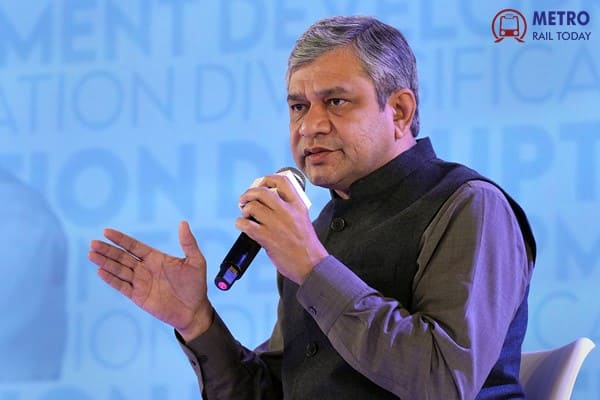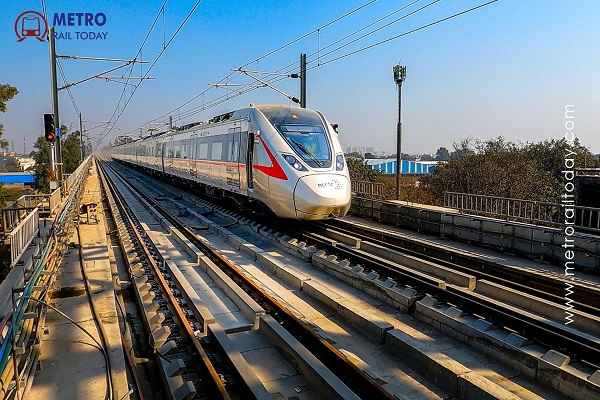 Mumbai needs RRTS beyond Metro Expansion to meet future Travel Demand: Ashwini Bhide
Mumbai needs RRTS beyond Metro Expansion to meet future Travel Demand: Ashwini Bhide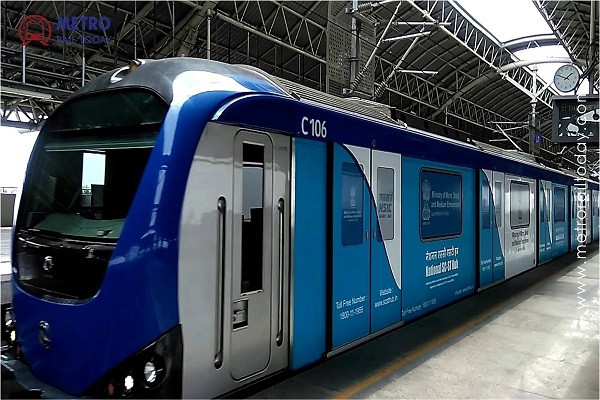 Jakson wins ₹163.7-crore E&M Works Contract for Corridor 4 of Chennai Metro Phase 2 Project
Jakson wins ₹163.7-crore E&M Works Contract for Corridor 4 of Chennai Metro Phase 2 Project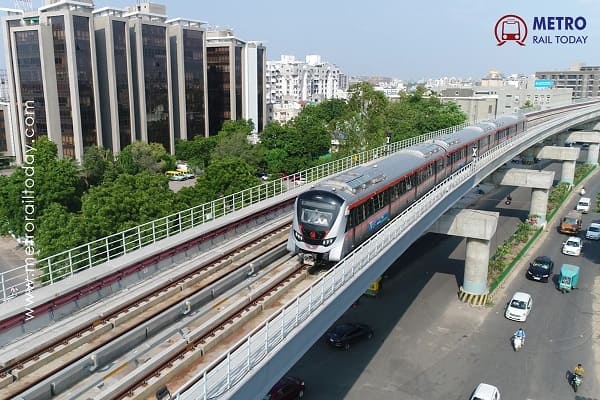 Titagarh Rail Systems roll out First ‘Made in India’ Driverless Train for Ahmedabad Metro Phase 2
Titagarh Rail Systems roll out First ‘Made in India’ Driverless Train for Ahmedabad Metro Phase 2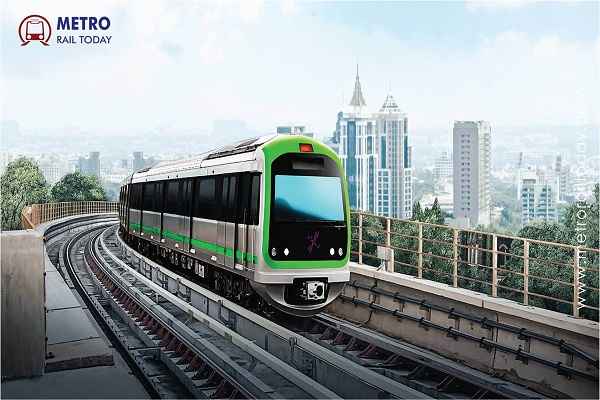 Aarvee Engineering bags DPR Consultancy Contract for 59.6-km Bengaluru–Tumakuru Metro Extension
Aarvee Engineering bags DPR Consultancy Contract for 59.6-km Bengaluru–Tumakuru Metro Extension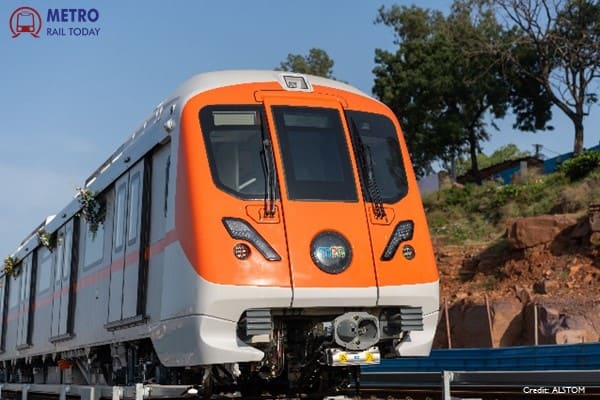 First priority corridor of Bhopal Metro inaugurated, India gets 20th city with modern MRTS network
First priority corridor of Bhopal Metro inaugurated, India gets 20th city with modern MRTS network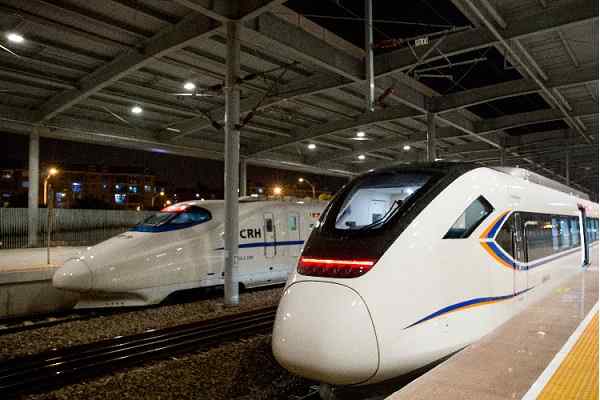 SCC–MIRAL JV bags ₹118.6 crore contract for Multimodal Integration at Bullet Train Stations
SCC–MIRAL JV bags ₹118.6 crore contract for Multimodal Integration at Bullet Train Stations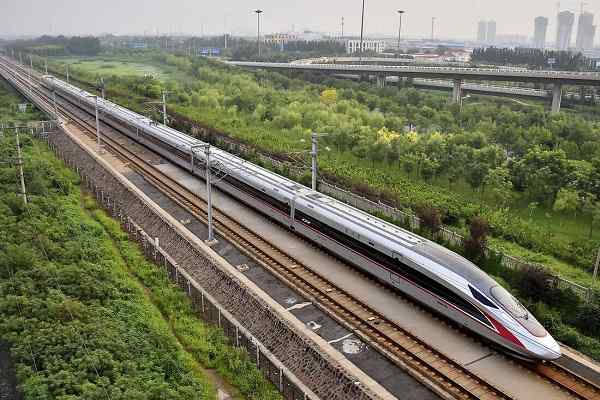 VinSpeed and Siemens Mobility join hands to develop Vietnam’s High-Speed Rail Network
VinSpeed and Siemens Mobility join hands to develop Vietnam’s High-Speed Rail Network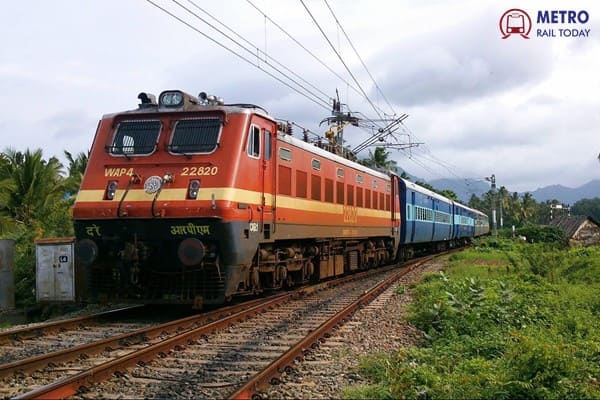 Titagarh Rail Systems Bags ₹273.24-Crore Rolling Stock Contract from Indian Railways
Titagarh Rail Systems Bags ₹273.24-Crore Rolling Stock Contract from Indian Railways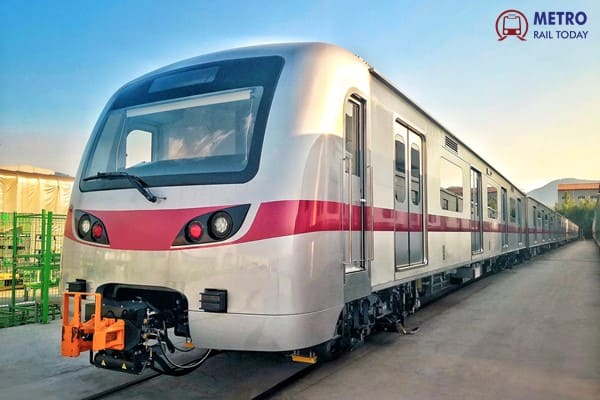 Metro Rail Transit Line (MRT-7): A New Way Forward for the North
Metro Rail Transit Line (MRT-7): A New Way Forward for the North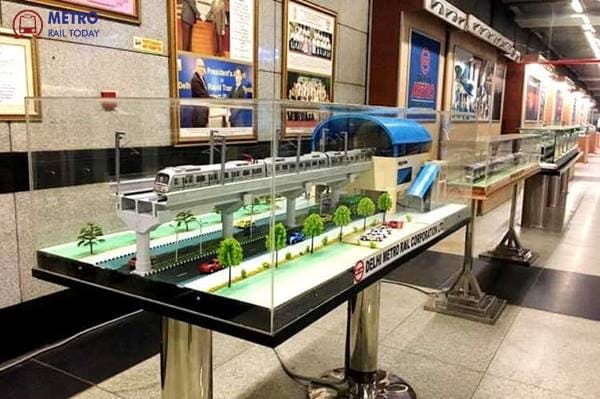 Delhi Metro inaugurates New State-of-the-Art Museum at Supreme Court Metro Station
Delhi Metro inaugurates New State-of-the-Art Museum at Supreme Court Metro Station
Vande Bharat creator Sudhanshu Mani takes his First Journey on the Train he conceived
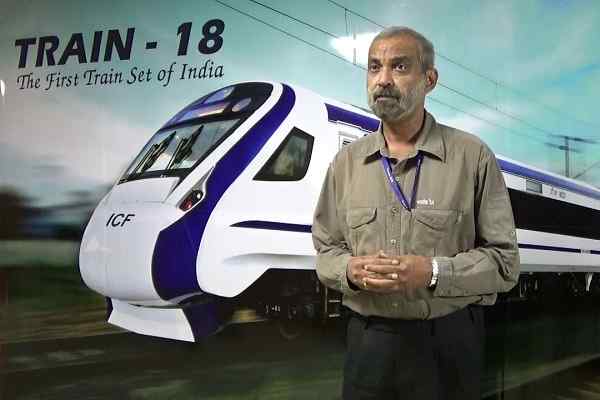
Lucknow, India (Metro Rail Today): More than seven years after India’s first Vande Bharat Express—born as Train 18—rolled out of the Integral Coach Factory (ICF) in Chennai, its chief architect, Mr. Sudhanshu Mani, finally boarded the train not as its creator, but as an ordinary passenger. The moment, long overdue and deeply personal, unfolded quietly on 20th November 2025, when Mani travelled from Lucknow to Prayagraj.
For a man who spent years shaping the country’s most path-breaking train, this was more than a journey. It was a homecoming.
A Ride Long Deferred
Train 18—India’s first semi-high-speed, indigenous, fully air-conditioned EMU—was conceived, designed, and manufactured under Mani’s leadership at ICF. Since its debut run on 15 February 2019, the Vande Bharat fleet has expanded across the country, symbolising India’s engineering confidence and modern mobility aspirations.
Yet, in a twist almost poetic, its creator had never travelled on it as a paying passenger.
Except for the intense test runs of 2018, Mani had always viewed it through the lens of a maker—not a commuter.
“Somewhere deep inside,” he had written earlier, “I always knew my real journey with Vande Bharat would happen silently, unannounced.”
That moment finally arrived this November.
A Familiar Train, But No Longer His ‘Baby’
Lucknow’s Charbagh station, bustling and raw as ever, set the backdrop. Escalators, lifts, and cleaner premises hinted at the system’s slow but steady upgrades. But it was the arrival of the Vande Bharat that shifted something inside him.
“The train looked familiar—yet no longer the baby I saw in 2018,” Mani observed.
He noted many details with the candid clarity of an engineer:
-
Exterior: Mostly unchanged but with slight waviness in the sidewall panels.
-
Executive Class: Clean, though marred by a puzzling red carpet strip.
-
Seating: Improved reclining mechanism compared to the prototype.
-
Toilets: Functional but showing classic signs of cost-cutting.
-
Ride Quality: “Good, but not perceptibly enhanced from the prototype.”
-
Interiors: Pleasant.
-
Food: Hygienic and reasonably palatable.
-
Occupancy: Poor—less than 25% in Executive Class.
But Mani was quick to steer clear of the reviewer’s mindset.
“I do not want this to become a catalogue of should-haves and could-haves,” he insisted. “This ride was about something more human, more meaningful.”
Recognition on Rails
Within minutes of departure, something unexpected happened. Quiet whispering spread through the coach. Then came the TTEs, onboard crew, RPF personnel, technicians, catering staff—one by one, greeting him with smiles that carried both pride and reverence.
Someone had recognised him.
“They were thanking me not as an official, not as an engineer, but as a railwayman who had been part of creating what they now proudly operated,” Mani recalled.
A mechanical technician held his hand a moment longer than necessary and whispered, “Sir, we feel proud running her.”
For Mani, that single sentence held more worth than awards or citations.
The Railwayman’s Heartbeat
In that moment, he reflected on what makes railway personnel a distinct tribe.
Outwardly bureaucratic, often stretched thin, sometimes cynical—yet beneath the surface lies an emotional bond with the railways that is rare in India’s public institutions.
IR, he wrote, is not just a transport operator—it is memory, migration, ambition, nostalgia, and nationhood rolled into steel and schedules.
He remembered:
-
The pointsman waving trains through foggy nights
-
The fitter whose hands carry permanent grease-stained scars
-
The trackman who walks miles before dawn
-
The loco pilot handling hundreds of tonnes with jeweller’s precision
“These are the men and women who give Indian Railways its heartbeat,” he said.
And in their eyes, on that journey, he found validation—for the idea, the effort, and the dream that Train 18 once represented.
A Circle Completed
When photographs from the journey appeared in The Pioneer, courtesy of journalist Deepak Kumar Jha, Mani felt something settle inside him. A closure, perhaps. A full circle.
As the Vande Bharat sped across Uttar Pradesh’s landscape, he was overcome with gratitude—not nostalgia.
Gratitude for having created something tangible and enduring.
Gratitude for his team, whose courage and ingenuity enabled Train 18.
Gratitude for the railway ecosystem, flawed yet fiercely committed.
“What a privilege,” he reflected, “to have worked on something that moves, carries lives, and will continue running long after I’m gone.”
A Journey That Changed the Traveller
When Mani stepped off the train at Prayagraj, he stepped off not as the designer of the Vande Bharat, not as a retired GM, not as an industry consultant—but as a passenger whose own creation had just taught him something about humility, pride, and belonging.
“Some journeys change destinations. Some change the traveller,” he wrote. “This one did both.”
And then came the line that beautifully seals both his legacy and his identity:
“Once a railwayman, always a railwayman. Forever.”





